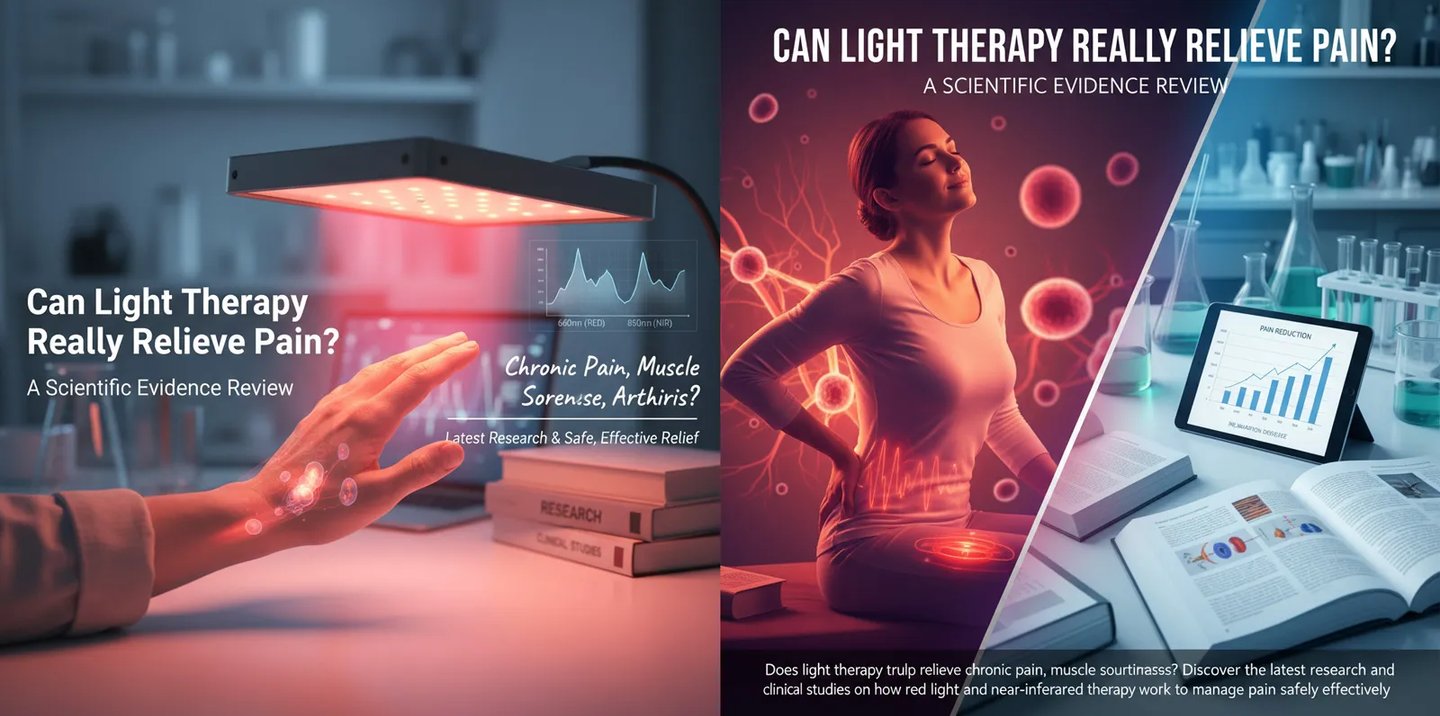Becoming the world's leading health appliance brand, bringing "professional physiotherapy home," and making a healthy life easily accessible.
Can Light Therapy Really Relieve Pain? A Scientific Evidence Review
Does light therapy truly help relieve chronic pain, muscle soreness, or arthritis? Discover the latest research and clinical studies on how red light and near-infrared therapy work to manage pain safely and effectively.
PHOTOTHERAPY BASICS > POPULAR SCIENCE EDITION
YEEQO
11/5/20251 min read


The Science Behind Pain Relief with Light Therapy
Over the past decade, Red Light Therapy (RLT) and Near-Infrared Light Therapy (NIR) have gained popularity for pain management and muscle recovery.
These therapies use specific wavelengths of light (typically 630–850nm) to penetrate the skin and stimulate mitochondrial energy production (ATP), which enhances cellular repair and improves blood circulation. This process helps reduce inflammation, relieve muscle tension, and promote non-invasive pain relief without medication.
What Science Says: Clinical Evidence
Numerous studies have confirmed the benefits of light therapy for pain reduction:
A 2017 review in Pain Research and Management found that red and near-infrared light therapy significantly reduced musculoskeletal pain, especially in arthritis and sports injury cases.
Researchers at Harvard Medical School discovered that light therapy can modulate nerve activity and decrease oxidative stress, easing chronic neuropathic pain.
The Arthritis Foundation recognizes red light therapy as a supportive treatment to reduce stiffness and improve joint comfort.
These findings provide solid scientific backing for integrating LED light therapy devices into daily wellness routines.
Who Can Benefit from Light Therapy?
Light therapy can be beneficial for:
Office workers with neck, shoulder, or back pain
Athletes and fitness enthusiasts recovering from exercise soreness
Arthritis or chronic pain patients as a complementary treatment
Post-surgery recovery to accelerate healing and reduce discomfort
Tip: For best results, use FDA-cleared light therapy devices consistently for 10–20 minutes per session, several times per week.
Advantages
Non-invasive and drug-free
Reduces inflammation and enhances circulation
Convenient for home use
Limitations
Works best with regular, long-term use
Does not replace medical treatment for severe pain
Effectiveness depends on wavelength and power density
Conclusion
Based on current scientific evidence, light therapy can effectively reduce certain types of pain and inflammation.
Both red and near-infrared light have well-documented biological effects validated by clinical studies.
For individuals seeking a natural, side-effect-free solution for pain management, light therapy is a promising and evidence-based option.
YEEQO
© 2025 YEEQO Health Appliances. All rights reserved.
